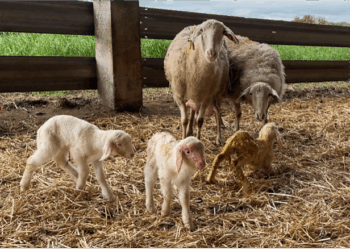Sheep and goat milk production has increased in recent years, mainly due mainly to the high demand for dairy products. The growth and intensification of the sector has led to the widespread use of antibiotics to treat animals. Consequently, the presence of antibiotic residues in milk is a cause for concern. However, it is a problem that can be avoided by applying appropriate practices.
What are inhibitors?
Inhibitors are substances that are capable of halting microbial growth. This group of substances includes antibiotics, detergents, disinfectants, and antiseptics.
The withdrawal period of an antibiotic is the time that needs to elapse between the last application and the use of the animal’s milk or meat. This period is specific for each drug, species, and animal product; and it is essential to respect it to avoid antibiotic residues in the products.
For many antibiotics, no specific withdrawal period has been defined for sheep and goats
Many antibiotics are not registered for sheep and goats and, in most cases, the exceptional (off-label) prescription of drugs intended for other species has to be resorted to. This makes it difficult to extrapolate the appropriate withdrawal period, and means there is a risk of the presence of inhibitors in the milk.
What impact do inhibitors have?

The first affected are farmers, since if inhibitors are detected in the milk, it could be considered unfit for human consumption. This may lead to fines, restrictions on sales, or destruction of the product.
In addition, cross-contamination could occur, causing large quantities of milk to be discarded.
Inhibitors also pose a risk for the dairy industry as a whole. Many of these residues are not destroyed by the thermal treatments applied to milk (pasteurization and UHT). Their presence can inhibit the bacterial processes necessary for the production of products such as cheeses and yogurts. Thus, the acidification, coagulation and maturation of products can be affected. This has an impact on their production and quality, since abnormal textures, odors and flavors may appear.
The production and quality of dairy products, such as cheese and yogurt, can be affected if inhibitors are present in the milk
On the other hand, inhibitors can pose a risk for the emergence of antibiotic-resistant bacteria, which could transmit their resistance genes to other bacteria, causing their spread.
How can we avoid them?
There are practices to reduce the risk of inhibitors:
– Including routine vaccination on the farm, to reduce the need for antibiotic treatments.
– Implementing good management and biosecurity practices.
– Making rational use of antibiotics.
– Using antibiotics registered for sheep and goats, and respecting the indicated dosage and withdrawal periods.
Article written by:
Tania Perálvarez Puerta. Global Product Manager, Small Ruminants Franchise – HIPRA
References
Emily D. Richards, et al., (2022) Antibacterial Drug Residues in Small Ruminant Edible Tissues and Milk: A Literature Review of Commonly Used Medications in Small Ruminants. Animals 2022, 12, 2607
M.C. Beltrán (2014). Analytical strategy for the detection of antibiotic residues in milk from small ruminants. Ph. D. Thesis
M.C. Beltrán. (2014) Detection of antibiotics in sheep milk by receptor-binding assays. International Dairy Journal. Volume 34, Issue 2, February 2014, Pages 184-189
M. Virto, et al., (2022) Antibiotics in Dairy Production: Where Is the Problem? Dairy 2022, 3(3), 541-564
T. Romero, et al., (2016) Detection of antibiotics in goats’ milk: Comparison of different commercial microbial inhibitor tests developed for the testing of cows’ milk. International Dairy Journal. Volume 62, November 2016, Pages 39-42




